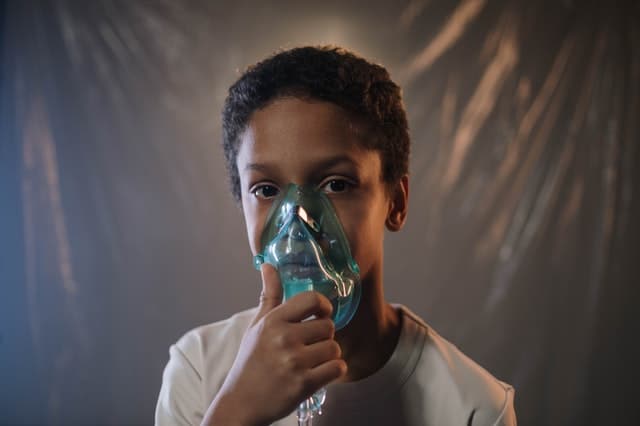Hypothermia is a medical emergency that occurs when your body loses heat faster than it can produce heat, causing a dangerously low body temperature.
This condition develops when the body temperature falls below 35 0 C (95 0 F). The effects vary depending on the speed of onset and the level to which the body temperature falls.
The blood supply to the superficial blood vessels in the skin, for example, shuts down to maintain the function of the vital organs such as the heart and brain.
Moderate hypothermia can usually be reversed. Severe hypothermia – when the core body temperature falls below 30 0 C (86 0 F) – is often, although not always, fatal.
No matter how low body temperature becomes, it is worth persisting with life-saving procedures until emergency help arrives.
WHAT CAUSES HYPOTHERMIA
Hypothermia can be caused by prolonged exposure to cold. Moving air has a much greater cooling effect than still air, so a high “wind-chill factor” in cold weather can substantially increase a person’s risk of developing hypothermia.
Immersion in cold water can cause death from hypothermia, not drowning. When surrounded by cold water, the body can cool up to 30 times faster than in dry air, and body temperature falls rapidly.
Hypothermia may also develop indoors in poorly heated houses. Elderly people, infants, homeless people, and those who are thin and frail are particularly vulnerable. Lack of activity, chronic illness, and fatigue all increase the risk; alcohol and drugs can exacerbate the condition.
How to recognise?
As hypothermia develops, there may be:
- Shivering, and cold, pale, dry skin;
- Apathy, disorientation or irrational behaviour; Lethargy or impaired consciousness;
- Slow and shallow breathing;
- Slow and weakening pulse In extreme cases, the heart may stop.
What are your aims?
- To prevent the casualty losing more body heat.
- Re-warm the casualty slowly.
- Obtain emergency help if necessary.
Be caution:
- Do not give the casualty alcohol because it dilates superficial blood vessels and allows heat to escape, making hypothermia worse.
- Do not place any heat sources, such as hot-water bottles or fires, next to the casualty because these may mobilise blood too rapidly and divert it suddenly from the heart and brain to the skin. They could also burn the casualty.
- Do not warm an elderly casualty in a bath.
- If the casualty loses consciousness, open the airway and check breathing (The unconscious casualty. Persist with CPR until emergency help arrives to assess the casualty’s condition.
- It is important that you stay warm yourself.
TREATMENT FOR HYPOTHERMIA WHEN OUTDOORS INCEDATNS
1. Take the casualty to a sheltered place as quickly as possible. Shield the casualty from the wind.
2. Remove and replace any wet clothing if possible; do not give him your clothes. Make sure his head is covered.
3. Protect the casualty from the ground. Lay him on a thick layer of dry insulating material, such as pine branches, heather, or bracken. Put him in a dry sleeping bag and/or cover him with blankets or newspapers. Wrap him in a plastic or foil survival bag, if available. You can shelter and warm him with your body.
4. A Call 999/112 or send for emergency help. Ideally, two people should go for help and stay together if you are in a remote area. You mustn’t leave the casualty by himself; someone must remain with him at all times.
5. To help re-warm a casualty who is conscious, give him warm drinks and high-energy foods such as chocolate, if available.

6. The casualty must be re-warmed gradually. Monitor and record the casualty’s vital signs – level of response, breathing, pulse, and temperature while waiting for help to arrive. When help arrives, the casualty should be taken to the hospital by stretcher.
TREATMENT FOR HYPOTHERMIA WHEN INDOORS
1. The casualty must be re-warmed slowly. Cover an elderly person with layers of blankets and warm the room to about 25 0 C (77 0 F). If the casualty is warmed too rapidly, blood may be diverted suddenly from the heart and brain to the body surfaces. Handle the casualty gently because, in severe cases, rushed treatment or movement may cause an abnormal heart rhythm.

2. Give him a warm drink such as soup and/or high-energy foods such as chocolate to help re-warm him.

3. A call 999/112 for emergency help. Be aware that in the elderly, hypothermia may also be disguising the symptoms of a stroke (pp. 174-75), a heart attack (p. 1 10), or an underactive thyroid gland (hypothyroidism).
4. Monitor and record the casualty’s vital signs level of response, breathing, pulse and temperature while waiting for help to arrive.
SPECIAL CASE HYPOTHERMIA IN INFANTS
A baby’s mechanisms for regulating body temperature are under-developed, so she may develop hypothermia in a cold room.
The baby’s skin may look healthy but feel cold, and she may be limp, unusually quiet, and refusing to feed.
Re-warm a cold baby gradually, by wrapping her in blankets and warming the room. You should always seek medical advice if you suspect a baby has hypothermia.
FROSTBITE
With this condition, the tissues of the extremities – usually the fingers and toes – freeze due to low temperatures. In severe cases, this freezing can lead to permanent loss of sensation and, eventually, tissue death and gangrene as the blood vessels and soft tissues become permanently damaged.
Frostbite usually occurs in freezing or cold and windy conditions. People who cannot move around to increase their circulation are particularly susceptible.
In many cases, frostbite is accompanied by hypothermia (pp. 194-96), and this should be treated accordingly.
How to recognize?
There may be:
- At first, “pins-and-needles
- Paleness (pallor) followed by numbness;
- Hardening and stiffening of the skin,
- A colour change to the skin of the affected area: first white, then mottled and blue. On recovery, the skin may be red, hot, painful and blistered. Where gangrene occurs, the tissue may become black due to [oss of blood supply.
What are your aims?
- To warm the affected area slowly to prevent further tissue damage.
- To arrange transport to hospital.
Be caution:
- Do not put the affected part near direct heat.
- Do not attempt to thaw the affected part if there is danger of it refreezing.
- Do not allow the casualty to smoke.
1. Advise the casualty to put his hands in his armpits. Move the casualty into warmth before you thaw the affected part further.

2. Once inside, gently remove gloves, rings, and any other constrictions, such as boots. Warm the affected part with your hands, in your lap, or continue to warm them in the casualty’s armpits. Avoid rubbing the affected area because this can damage skin and other tissues.
3. Place the affected parts in) warm water at around (1 04 0 F). Dry carefully, and apply a light dressing of dry gauze bandage.

4. Raise the affected limb to reduce swelling. An adult may take the recommended dose of paracetamol or her own painkillers. A child may have the recommended dose of paracetamol syrup (not aspirin). Take or send the casualty to the hospital.

